Main > SJGTranscription
Computer Music Transcription - a brief introduction to our work
Below is a waveform from a solo
flute recording:
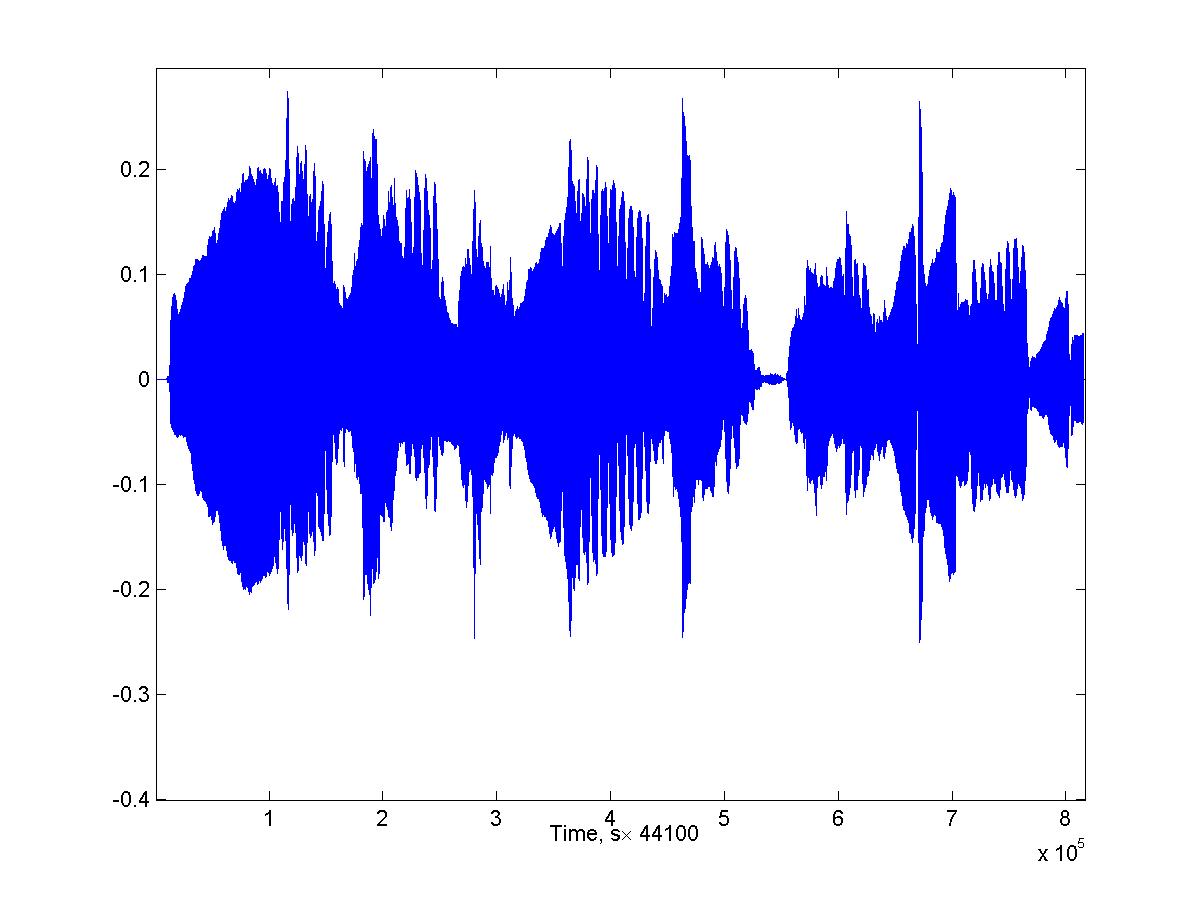
And a corresponding computer pitch transcription
(see Godsill and Davy, ICASSP 2002 ):
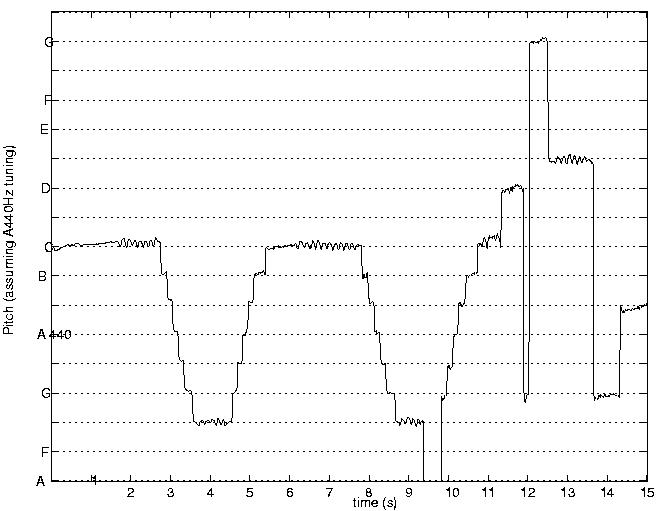
This is a relatively simple task for single instruments playing one note at a time.
We are concerned with the more challenging case of several or many notes playing simultaneously. We will wish to answer some or all of the following questions:
- How many notes are playing at a given time?
- What are their pitches?
- What instruments are playing, and what timbre are they using?
We employ a harmonic modelling approach in which each note in a chord is modelled using a harmonic complex:

This leads to a complex parameter and model selection task, for which we employ Bayesian Monte Carlo computational techniques. These are iterative, and successively refine the current `estimate' of the musical parameters.
Take for example a
4-note chord (here repeated many times). We now perform iterative Monte Carlo sampling to refine our estimate of the fundamental frequencies of each note in the chord, finally reaching the true pitches of the 4 notes:
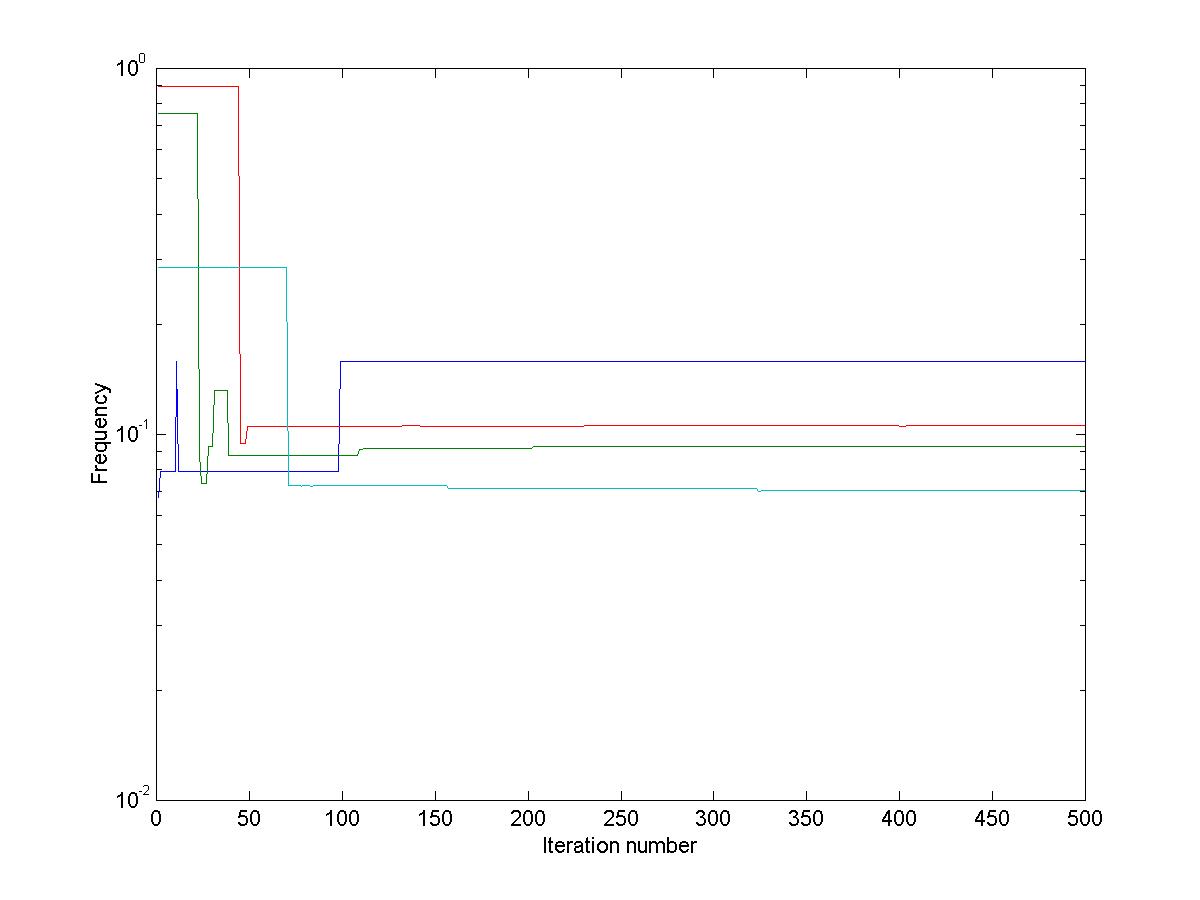 (Listen to the successive estimates of the chord)
(Listen to the successive estimates of the chord)
Here's also a 2-note extract (
commit.wav):
First the `ground truth', transcribed by human listener:
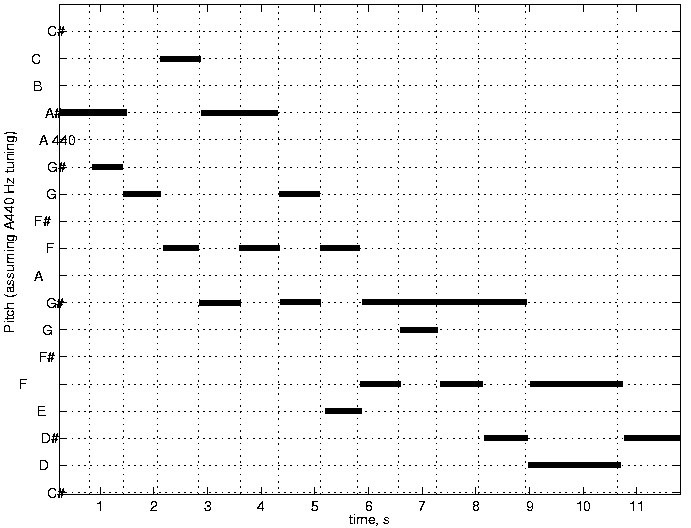
And the computer transcription of the same extract - note the accurate tracking of vibrato and other
performance artefacts:
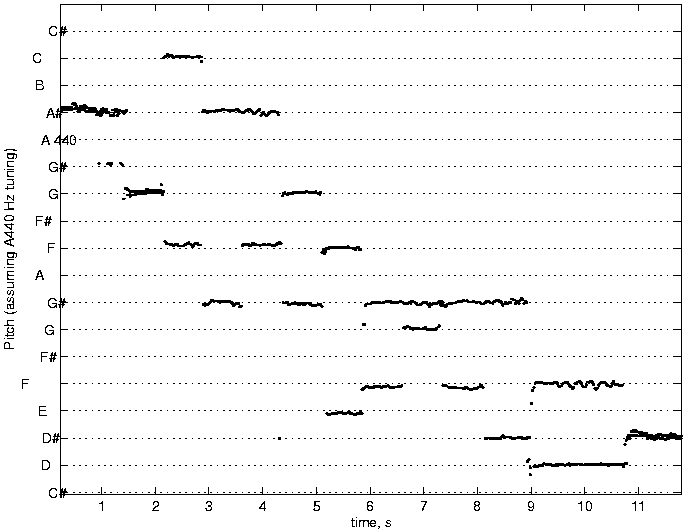
Finally, extraction of the melody line from a complex
jazz piece:
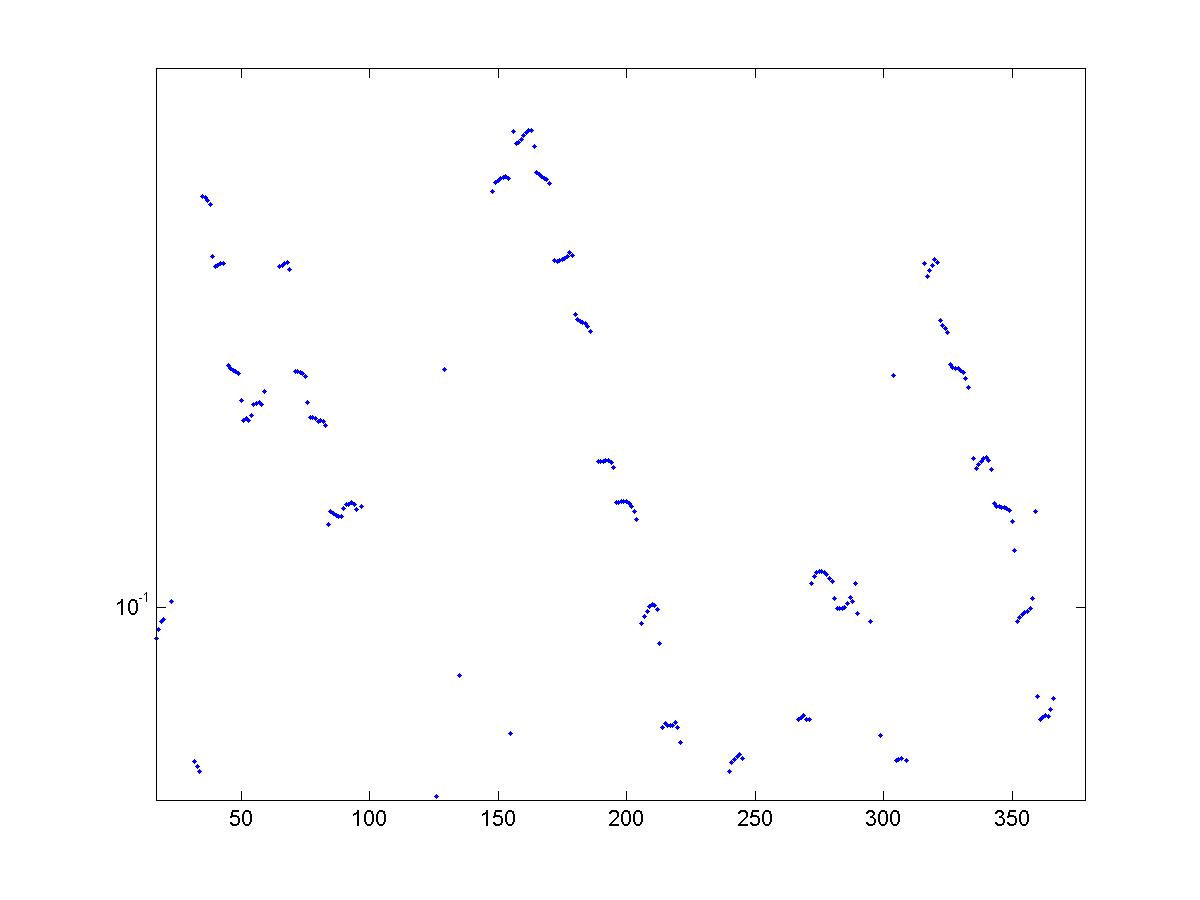
and the
extracted melody.
For more information, see
Davy and Godsill. Bayesian Statistics VII. Oxford University Press, 2003.
 And a corresponding computer pitch transcription (see Godsill and Davy, ICASSP 2002 ):
And a corresponding computer pitch transcription (see Godsill and Davy, ICASSP 2002 ):
 This leads to a complex parameter and model selection task, for which we employ Bayesian Monte Carlo computational techniques. These are iterative, and successively refine the current `estimate' of the musical parameters.
Take for example a 4-note chord (here repeated many times). We now perform iterative Monte Carlo sampling to refine our estimate of the fundamental frequencies of each note in the chord, finally reaching the true pitches of the 4 notes:
This leads to a complex parameter and model selection task, for which we employ Bayesian Monte Carlo computational techniques. These are iterative, and successively refine the current `estimate' of the musical parameters.
Take for example a 4-note chord (here repeated many times). We now perform iterative Monte Carlo sampling to refine our estimate of the fundamental frequencies of each note in the chord, finally reaching the true pitches of the 4 notes:
 (Listen to the successive estimates of the chord)
Here's also a 2-note extract (commit.wav):
First the `ground truth', transcribed by human listener:
(Listen to the successive estimates of the chord)
Here's also a 2-note extract (commit.wav):
First the `ground truth', transcribed by human listener:
 And the computer transcription of the same extract - note the accurate tracking of vibrato and other
performance artefacts:
And the computer transcription of the same extract - note the accurate tracking of vibrato and other
performance artefacts:
 Finally, extraction of the melody line from a complex jazz piece:
Finally, extraction of the melody line from a complex jazz piece:
 and the extracted melody.
For more information, see Davy and Godsill. Bayesian Statistics VII. Oxford University Press, 2003.
and the extracted melody.
For more information, see Davy and Godsill. Bayesian Statistics VII. Oxford University Press, 2003.